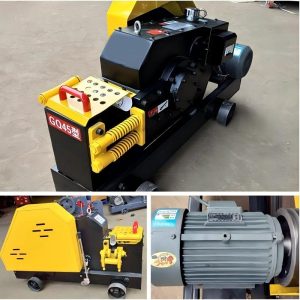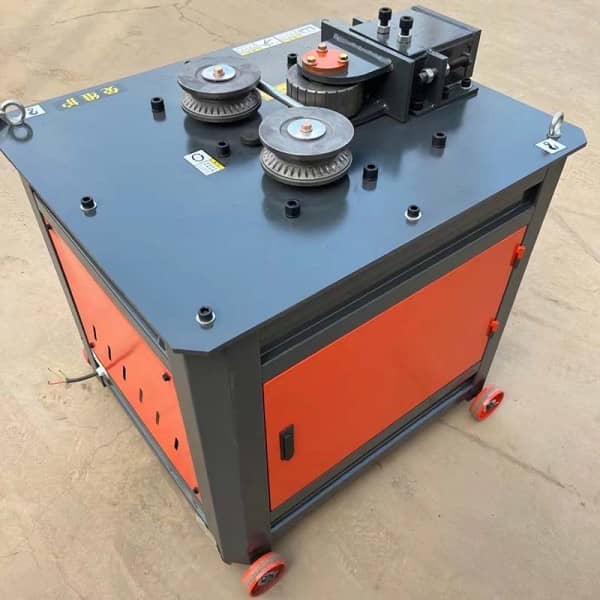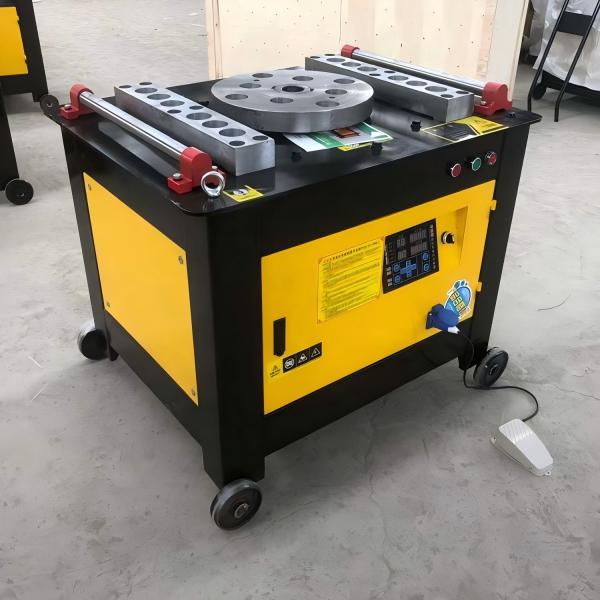Rebar Cutting Machine: The Complete Guide for Construction Professionals
A Complete Guide to Choosing and Using Rebar Cutting Equipment in Construction Projects
In the modern construction industry, rebar cutting machine have become essential tools for reinforcing steel processing. Whether you’re working on a high-rise building, a highway bridge, or a commercial foundation, the precise and efficient cutting of rebar (reinforcing bar) is a critical task that directly affects the structural integrity and timeline of your project.
In this article, we’ll explore the basics of rebar cutting machines, how they work, their key types and benefits, and tips for selecting the right model for your needs.
What Is a Rebar Cutter?
A rebar cutting machine is a specialized mechanical device designed to cut steel bars (rebar) of various diameters into specified lengths. These machines are used in steel processing plants, construction sites, precast concrete factories, and other infrastructure projects where reinforcing steel is required.
The primary function of a rebar cutting machine is to improve productivity, ensure cutting accuracy, and reduce manual labor compared to traditional methods such as gas cutting or hacksaws.
How Do Rebar Cutting Machines Work?
Most modern rebar cutters are powered by either an electric motor or a hydraulic system. When the operator feeds the steel bar into the cutting blade area, the motor drives a high-torque mechanism that applies shearing force to the bar, resulting in a clean and precise cut.
There are two common cutting systems:
-
Flat Knife (Shearing Blade): These machines use a straight edge blade that cuts through the rebar like scissors. Ideal for high-volume, industrial-grade work.
-
Round Knife (Rotary Blade): These models use rotating discs to cut the rebar. They are suitable for slightly smoother finishes and customized shaping.
Key Benefits of Using Rebar Cutter
-
Precision and Accuracy
Rebar cutting machines allow operators to cut steel bars to exact lengths without errors, which is crucial for structural stability. -
High Efficiency
Compared to manual cutting, these machines save time and increase work efficiency significantly, especially in large-scale construction environments. -
Cost-Effectiveness
Reduced labor costs and minimal material waste translate into better project budgeting. -
Durability and Safety
Most machines are built with heavy-duty steel frames, overload protection, and safe operating controls to ensure long-term use and worker safety.
Types of Rebar Cutting Machines
There are several types of rebar cutting machines available in the market, depending on the operation and power system:
-
Manual Rebar Cutter: Basic tool used for small-scale jobs. Requires physical force.
-
Electric Rebar Cutter: Uses an electric motor to drive the cutting blade. Ideal for repetitive cutting tasks.
-
Hydraulic Rebar Cutter: Uses hydraulic pressure for high-capacity cutting. Suitable for thick or high-tensile rebars.
-
Portable Rebar Cutter: Lightweight and mobile, designed for on-site use where flexibility is required.
How to Choose the Right Rebar Cutter
Before purchasing, consider the following factors:
-
Rebar Diameter Range: Match the machine’s capacity with the size of the steel bars you plan to cut.
-
Cutting Frequency: For continuous operation, choose a heavy-duty electric or hydraulic model.
-
Power Source: Electric, diesel, or battery-powered machines are available based on job site needs.
-
Knife Type: Flat or round knife options depend on your desired cutting style and finish.
-
Maintenance and Support: Choose a brand with good after-sales service and spare parts availability.
Applications of Rebar Cutting Machines
Rebar cutting machines are commonly used in:
-
Commercial and residential building construction
-
Road and bridge infrastructure
-
Precast concrete production
-
Tunnel and subway construction
-
Steel processing plants
Conclusion
A rebar cutting machine is not just a tool—it’s a key part of ensuring your project stays on schedule, meets structural requirements, and optimizes labor resources. With many models and configurations available, it’s essential to understand your project demands and choose the right machine accordingly.
Whether you’re a construction contractor, steel supplier, or machinery dealer, investing in the right rebar cutting solution can bring long-term benefits to your business.





